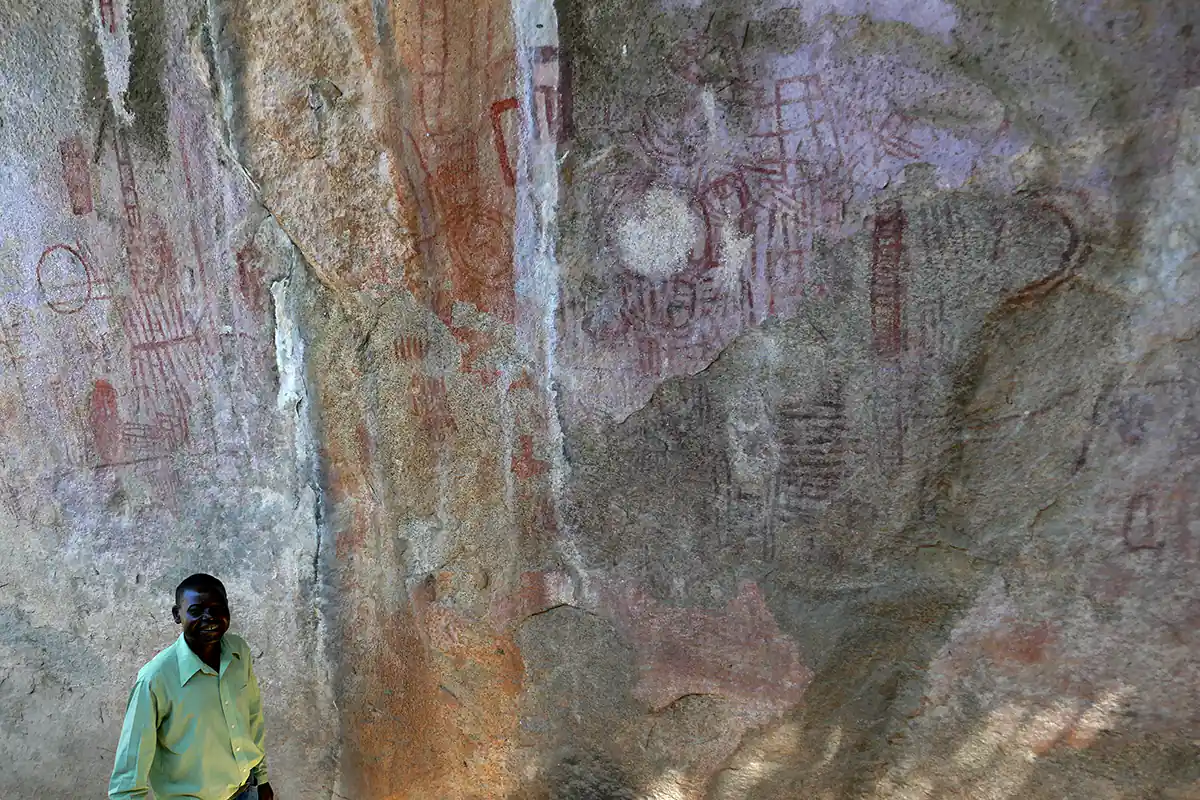Sacred Sites of Malawi
Malawi: Exploring Sacred Landscapes and Spiritual Heritage
Malawi, known as "The Warm Heart of Africa," possesses a landscape dotted with sacred sites reflecting a diverse spiritual tapestry. Traditional animistic beliefs, a strong Christian presence, and smaller communities of other faiths together shape the religious fabric of Malawi, contributing to the significance of various pilgrimage destinations and holy locations.
Chongoni Rock Art Area
The Chongoni Rock Art Area, a UNESCO World Heritage Site, holds significance for both its cultural value and its spiritual connections. Depicting hunter-gatherer and agrarian traditions, these rock paintings provide a captivating glimpse into ancient lifeways. Traditional beliefs ascribe them a connection to ancestral spirits and practices like rainmaking ceremonies, reflecting a connection between art, sacred practices, and the continuity of culture.
Mphunzi Cave Paintings
In the Dedza district, the Mphunzi Cave Paintings offer a further example of rich prehistoric rock art traditions. Their evocative images are associated with Chewa rituals and practices connected to ancestors and spirits of the land, echoing with traditional belief systems still honored in communities today.
Nyau Secret Society Initiation Sites and Graveyard Forests
The cultural practices of the Nyau secret society, an integral part of the Chewa people's cosmology, hold several sites sacred. Masked dances that blend myth, ancestor veneration, and social commentary take place in locations often hidden within sacred graveyard forests. The precise locations are known only to initiated members, but this deep cultural tradition relies on maintaining these spaces as repositories of wisdom and connection to the ancestral realm.
Lake Malawi & Mount Mulanje
In traditional cosmology, both Lake Malawi and Mount Mulanje carry immense spiritual significance. Lake Malawi, one of the African Great Lakes, is recognized as a source of both physical sustenance and a dwelling place for ancestral spirits. Mount Mulanje, towering over the landscape, embodies a revered ancestral presence and provides a dramatic setting for rituals and traditions honoring both ancestors and the forces of nature.
Churches and Mission Stations
Introduced by missionaries in the 19th century, Christianity now stands as Malawi's dominant religion. Many historical churches and mission stations retain significance as both spiritual and cultural markers. Sites like St. Michael and All Angels Church in Blantyre, constructed in the 1890s, symbolize the legacy of early missionaries, alongside countless other churches of varying denominations throughout the country.
Smaller Faith Communities
While often not possessing large designated pilgrimage sites, Malawi's smaller faith communities, including Hindu and Muslim populations, maintain mosques, temples, and gathering spaces in a multi-faith context. These serve as points of worship and represent the religious diversity of the country.
Malawi's landscape of sacred sites offers a powerful reflection of how spiritual beliefs, history, and natural features all interact and influence society. Whether grand cathedrals, secluded initiation sites, ancient rock art, or imposing natural wonders, these places bear witness to a vibrant legacy of diverse faiths and spiritual traditions within the nation.
Note:
It's essential to observe respectful practices when visiting any sacred site in Malawi. Seek permission or guidance from local individuals and research appropriate behaviors beforehand to ensure cultural sensitivity.
Martin Gray is a cultural anthropologist, writer and photographer specializing in the study of pilgrimage traditions and sacred sites around the world. During a 40 year period he has visited more than 2000 pilgrimage places in 160 countries. The World Pilgrimage Guide at sacredsites.com is the most comprehensive source of information on this subject.

